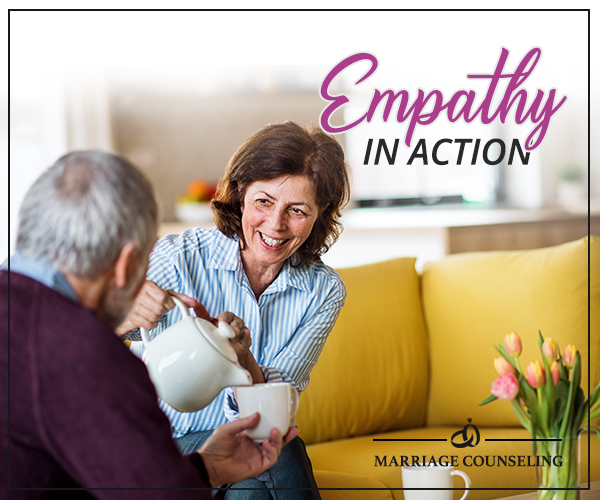Empathy: Do you know what that word means? To have empathy is to feel and share the emotions of another and thereby better understand what they are experiencing. Daniel Goleman describes three kinds of empathy; cognitive, emotional, and compassionate. Empathy is different than sympathy, though they might seem the same on the surface. The difference between the most commonly used meanings of these two terms is: sympathy is feeling compassion, sorrow, or pity for the hardships that another person encounters. Empathy is putting yourself in the shoes of another.
Empathy is not necessarily something you’re born with. Children are born needy and dependent upon their parents. They are selfish and determined from the start to get everything they need from them. It’s not until they begin to explore the world around them that they turn outward and begin to care about other things and people. It’s during their crucial emotional development that they learn to empathize with others and the skills to reason out how other people may feel and to share in those emotions.
There are definitely those for whom empathy is a strong force. These “empaths” are extremely sensitive to how others are feeling, are more able to spot someone who is acting falsely or telling a lie. They can be sensitive enough to have a visceral, almost to the point of physical reaction to negative people and energy, and are generally introverted and intuitively emotional. Empaths feel a very strong pull to help people and animals, and are working in some of our most needed professions such as counselors, teachers, advocates, nurses and social workers.
In the context of interactions with others, in relationships and conversations, empathy is wonderful attribute to employ. When you have empathy for your loved one, your partner or child, you are less liable to create conflict or escalate problems. You are able to see the opposing point of view, to see and literally feel what the other person is feeling and this helps to problem solve and find options that work for both of you.
Active listening and validating another person’s feelings is empathy in action. Letting your partner know that you understand their point of view, that you “get” what they mean, and that you can put yourself in their shoes is a great help. It puts the other person at their ease and lets them know they can trust you and safely confide in you.
Empathy is a flower that doesn’t grow in everyone’s garden. Those who are lacking empathy have a much more difficult time understanding feelings and can come across as harsh or even narcissistic in extreme cases. If you are partnered with someone who has a hard time seeing your side of different issues and makes the conversations about them, they may be lacking in empathy. It’s difficult for them to understand how others are feeling and they may have a more difficult time resolving issues, having compassion for others’ feelings or understanding the opposing side of an argument.
The good news is that you can model empathy in action and others can learn how to empathize and have compassion for others. Using empathy in action in your relationships will help your partner and those you love to do the same.







